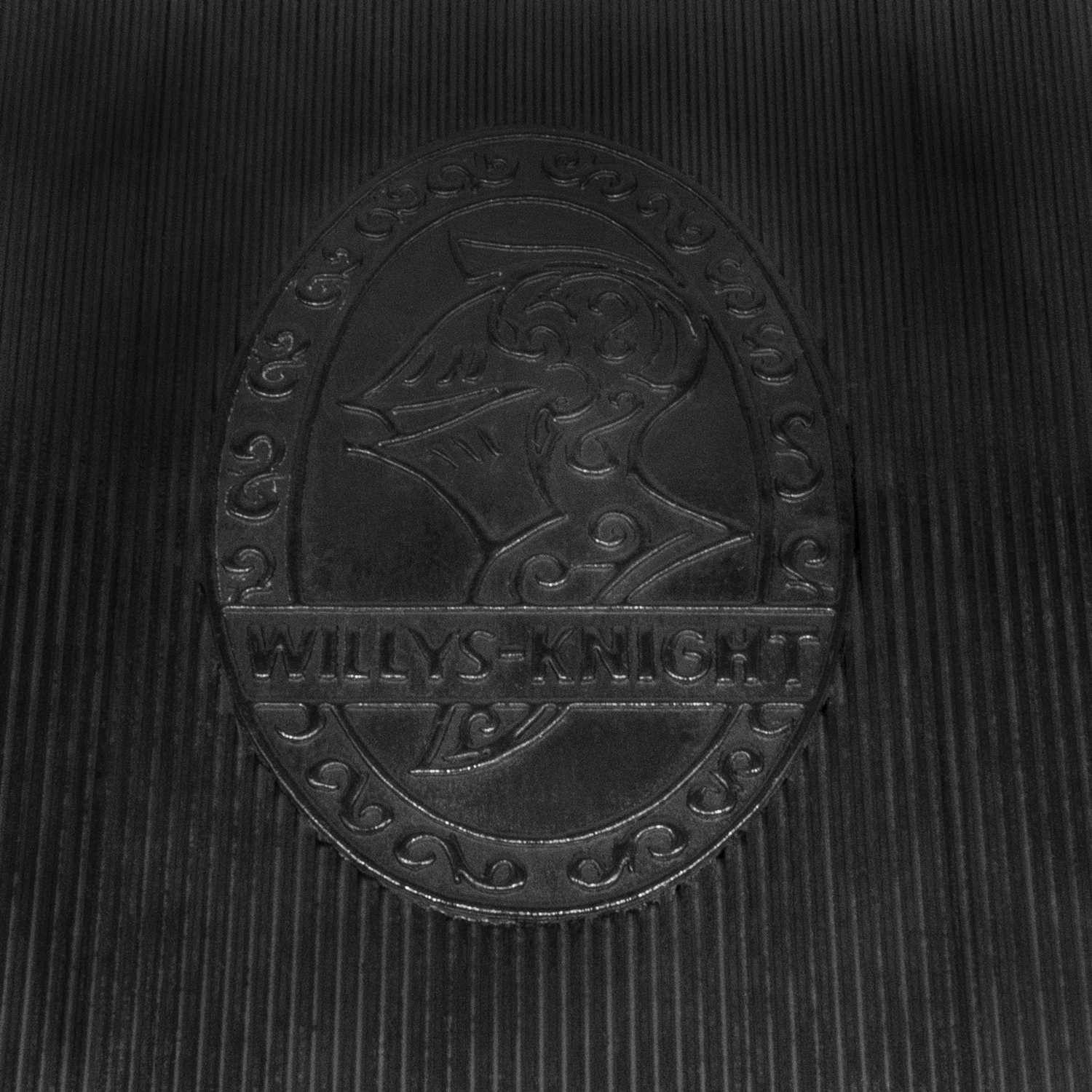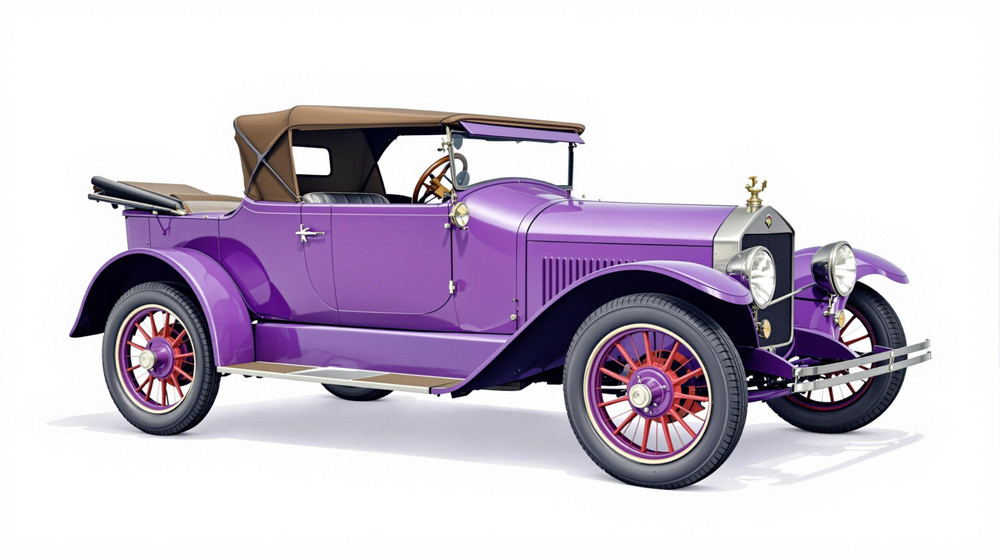Image of 1917 Willys Knight 88-4, Note: These illustrations use artistic license and may differ from actual historical models.
Performance Metrics
Fundamental Metrics
Emotional Appeal
MMP Rating
| Engine Specifications | |
|---|---|
| Engine: | 4-cylinder, sleeve-valve engine |
| Displacement: | 186 cubic inches |
| Horsepower: | Estimated 20-30 HP |
| Torque: | Not available |
| Compression Ratio: | Not available |
| Ignition System: | Battery and coil |
| Cooling System: | Water-cooled |
| Performance Specifications | |
| 0-60 Time: | Not available |
| 1/4 Mile Time: | Not available |
| Top Speed: | 45-50 mph |
| Transmission and Drive | |
| Drive Type: | Rear-wheel drive |
| Transmission Type: | 3-speed manual |
| Fuel and Efficiency | |
| Fuel System Type: | Carburetor |
| MPG: | Not available |
| Dimensions and Brakes | |
| Brakes: | Mechanical drum brakes |
| Wheelbase: | 112 inches |
| Weight: | Estimated 2,800 lbs |
Note: Specifications for classic cars are given to the best of our ability, considering the limited and variant data available.
Stepping Back in Time: The 1917 Willys Knight 88-4
The 1917 Willys Knight 88-4 stands as a testament to the ingenuity and elegance of early automotive engineering. Born from the ambitious mind of John North Willys, the Willys-Overland Company crafted this vehicle during an era where cars began to symbolize freedom and innovation. The Willys Knight 88-4, with its sleeve-valve engine, was at the forefront of technology, offering a level of sophistication that was unheard of at the time. A notable moment in its history is the widespread acclaim it received for its remarkably silent engine, a feature that set it apart from the clattering powertrains of its contemporaries.
Design and Innovation
The exterior of the 1917 Willys Knight 88-4 exuded class with its long, sweeping fenders and upright radiator grille—a hallmark of automotive design in the 1910s. The interior was a realm of luxury, with high-quality materials such as leather and wood adorning seats and dashboards. For its era, the vehicle boasted impressive technological features like electric lights and a starter, which were cutting-edge at the time. Color options were limited compared to today's standards, but popular choices included deep blues and rich blacks that complemented its stately silhouette. Among body styles, the touring version stood out as an iconic representation of open-air motoring elegance.
Historical Significance
The Willys Knight's sleeve-valve engine was revolutionary, reducing noise and wear compared to traditional poppet-valve engines and influencing future automotive designs. This car not only set itself apart with its quiet operation but also demonstrated reliability that shaped consumer expectations. Its lasting influence can be seen in the focus on engine refinement and passenger comfort that became staples in later automotive development.
Performance and Handling
In terms of performance, the 1917 Willys Knight 88-4 was no slouch for its time. While exact top speed figures are elusive, it was known for respectable acceleration and cruising capability. Handling was characterized by a solid yet comfortable ride, with drivers often remarking on the smoothness even over less-than-ideal road conditions. Behind the wheel, one would experience the gentle hum of the sleeve-valve engine—a stark contrast to the cacophony typical of other cars from that period.
Ownership Experience
The Willys Knight was versatile for its time—used as a daily driver by some, while others cherished it as a show car or even raced it in endurance events. Maintenance required a basic mechanical understanding but was generally straightforward due to simpler technology. Reliability was one of its strong suits, making it a favorite among owners who valued longevity.
Fun Facts
This classic has several unique trivia points; for instance, some models were owned by Hollywood celebrities who appreciated their silent operation during filming. While not known for breaking speed records, it did set standards for endurance and reliability. Criticisms were few but often pointed towards its higher cost compared to mass-produced models.
Collector's Information
Today, a 1917 Willys Knight 88-4 can fetch a wide range in value depending on condition and provenance—anywhere from tens of thousands to over a hundred thousand dollars. Production numbers were limited, making surviving examples quite rare and sought after by collectors. As an appreciating asset, this vehicle continues to climb in value as enthusiasts recognize its significance in automotive history.
Conclusion
The 1917 Willys Knight 88-4 is more than just an antique; it's a piece of history that embodies the spirit of early twentieth-century innovation. Its silent sleeve-valve engine and luxurious appointments made it a standout vehicle of its time—an enduring classic that continues to captivate collectors and historians alike.
1917 Willys Knight 88-4 Catalog of Parts
 1917 Willys Knight 88-4 Accessory Floor Mat - 12"X17"-AC 51Accessory Floor Mat - made of high quality black rubber with molded original emblem. Also designed to be sewn into new carpets. 12"X17", Each
1917 Willys Knight 88-4 Accessory Floor Mat - 12"X17"-AC 51Accessory Floor Mat - made of high quality black rubber with molded original emblem. Also designed to be sewn into new carpets. 12"X17", EachWhy Choose Metro?
For over 100 years, Metro Moulded Parts has been the pinnacle of quality in classic car restoration parts. Our commitment to precision and authenticity in every component ensures a perfect fit and an OEM-level appearance.
- Expert Craftsmanship & Quality: Each part is a testament to our dedication to reliability and perfection, crafted from original designs and thoroughly tested.
- Advanced Technology: We use cutting-edge techniques to create flawless, long-lasting parts that surpass others in performance.
- SuperSoft Sponge – The Ultimate Door Seal: Not only are our door seals 30% softer than competitors', but they're also guaranteed to never leak. They effectively reduce wind and road noise, enhancing your classic car's comfort and driving experience.
- Proudly American: Our parts are a product of American craftsmanship, made in the USA with a spirit of excellence and heritage.
- Unrivaled Warranty: We back our products with a 30-year industry-leading warranty, a testament to our confidence in their quality.
Join us in preserving the legacy of classic cars with parts that are crafted for perfection, not just made.

